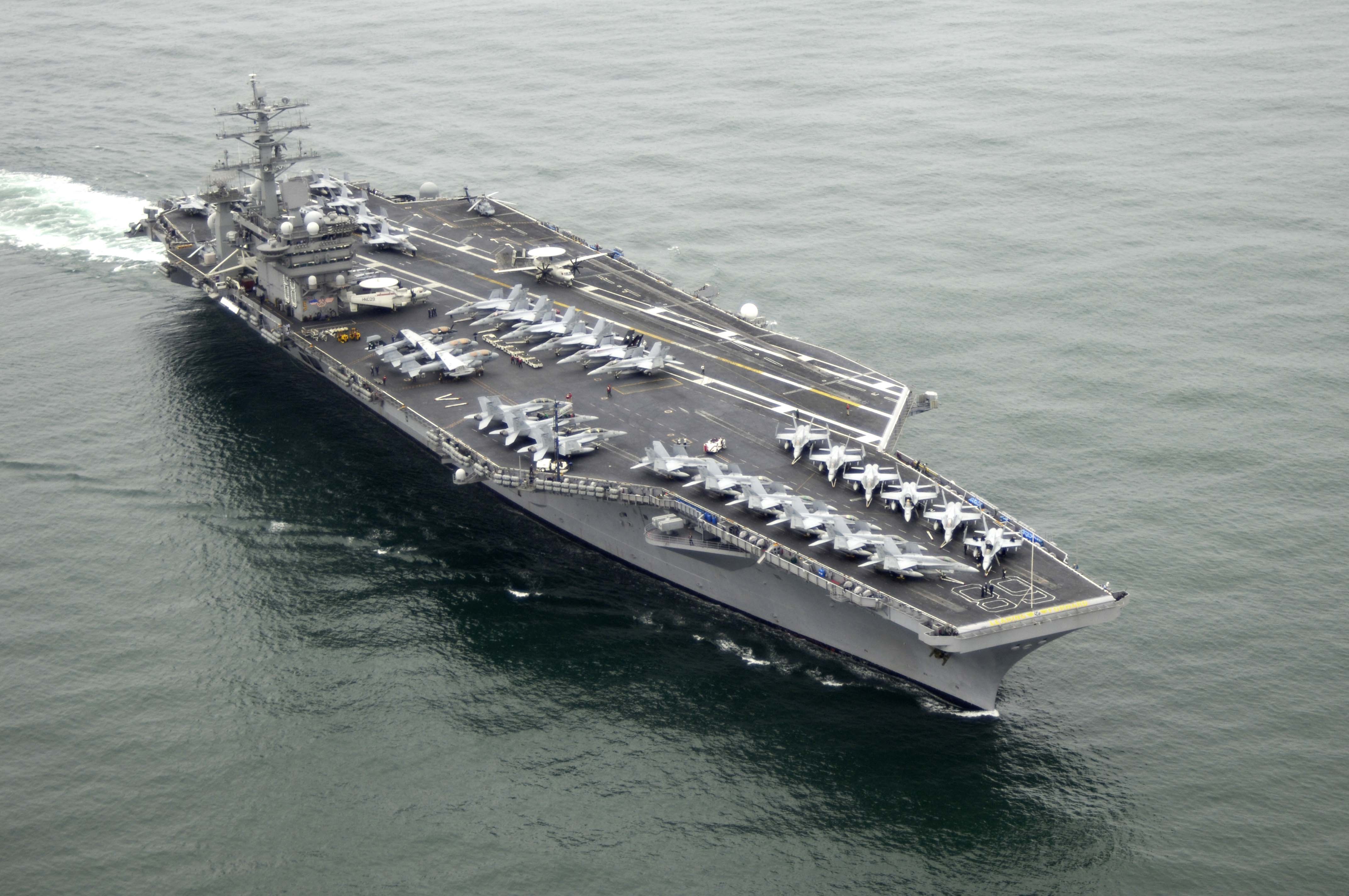The US Navy’s oldest aircraft carrier, which has been on active duty for almost 50 years, has achieved a ‘once in a lifetime milestone’ by successfully completing 350,000 plane landings while sailing in the South China Sea, the service announced on April 24.
The USS Nimitz achieved this remarkable milestone on April 22 when a F/A-18F Super Hornet successfully landed on its deck in the South China Sea, the US Navy said.
The aircraft carrier has become the first operational carrier in the US Navy fleet to reach this significant achievement. The USS Dwight D Eisenhower (CVN 69) has the second-highest count of arrested landings at 326,600.
On the morning of April 22, Capt. Craig Sicola, the commanding officer of Nimitz, along with Cmdr. Luke Edwards, the commanding officer of the Strike Fighter Squadron (VFA) 22 – also known as the “Fighting Redcocks” – successfully conducted a landing on the carrier’s deck, piloting a F/A-18F Super Hornet.
Sicola expressed humility and pride in achieving this momentous feat for their ship. He remarked that the landing was a tribute to the countless naval aviators who had flown before him, and he felt honored to have been a part of such a historic milestone.

An arrested landing, commonly called a trap, occurs when a landing plane makes contact with an aircraft carrier, and its tailhook catches on one of the four wires positioned across the deck.
The tailhook promptly reduces the fighter jet’s speed by capturing one of the cables, allowing it to stop safely. The decks of aircraft carriers are too short for conventional landings of aircraft.
Nimitz is the flagship of the Nimitz Carrier Strike Group (NIMCSG), which is currently deployed on a scheduled mission within the US 7th Fleet area of operations.
Rear Adm. Christopher Sweeney, the head of Carrier Strike Group 11, said that “As we sail through the South China Sea, we celebrate this once-in-a-lifetime achievement, 350,000 arrested landings, over a hundred years of innovation in the US Aircraft Carrier, and the determination, sacrifice and winning spirit of all past and present Naval Aviators and our Sailors.”
Sweeney praised the nation’s commitment to promoting peace and security worldwide. He noted that the aircraft carrier, operating for almost half a century, is a shining example of that commitment.
USS Nimitz Aircraft Carrier
The USS Nimitz was commissioned in 1975 and executed its first arrested landing that same year. Currently, it is the world’s oldest active aircraft carrier, as stated by the Navy.
Shortly after hitting the latest milestone, the Nimitz welcomed its 350,001st arrested landing. According to the service, the carrier has completed 30 deployments and participated in numerous operations since entering service, according to the Navy.
The Nimitz-class aircraft carriers, propelled by two nuclear reactors, typically have a lifespan of approximately 50 years. Consequently, the USS Nimitz, approaching its service’s end, is scheduled to be retired soon.
The vessel’s blueprint was modeled after the Navy’s innovative nuclear-powered supercarrier, the USS Enterprise (CVN-65), operational from 1961 until 2012.
The US Navy’s budget request for FY2024 includes plans to extend the operational lifespan of Nimitz until May 2026. The idea of extending Nimitz’s service has been under consideration since at least 2020 due to various factors, including maintenance backlogs.

Nimitz has a full load displacement of around 97,000 tons and is powered by two A4W nuclear reactors. When the time comes for the ship’s disposal, a significant challenge is involved due to the residual radioactivity of various components.
This issue wasn’t a concern when the Navy decommissioned carriers that ran on conventional fuel in the past. Experts believe that the inactivation process is complex and sensitive and needs to be carried out in compliance with the National Environmental Policy Act to reduce environmental harm.
The process involves multiple factors that must be considered, making it a highly regulated and complex operation requiring meticulous planning and execution.
The Navy will likely utilize the knowledge acquired during the extraordinary dismantling of the USS Enterprise to improve the complex disposal process. This is expected to provide valuable insights and experience that can be used to manage the unique challenges associated with decommissioning Nimitz.
Over the roughly 50 years of service, the Nimitz has experienced several fatal accidents on its deck. Two of the most significant incidents include the crash of an EA-6B Prowler in 1981, which resulted in the deaths of 14 sailors and dozens of injuries, and the crash of an A3 Skywarrior bomber in 1987, which claimed the lives of seven people.
- Contact the author at ashishmichel(at)gmail.com
- Follow EurAsian Times on Google News





